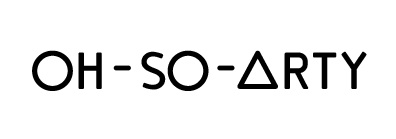For the past 20 years, Chelsea has remained a designated area for true art lovers.
It is in this particular moment that Chelsea has become the center for contemporary art in New York City, while the neighborhood is going through a massive face lift and things are always changing.
The famous wild art scene of the 60’s and 70’s in NYC was based in Soho—at that time it was considered the industrial area for businesses like import/export houses, textile houses and “rag trade” clothing stores.
Artists began to move to Soho mainly because of it’s big loft spaces and cheap rent.
Artists like Philip Glass, Twyla Tharp, Nam June Paik, Meredith Monk, Chuck Close and Frank Stella were of the few that helped create and shape the ideal situation which made Soho a nexus for creative activity at a very magical time in the 1960's. SoHo became the focal point which represented the hip, avant garde scene of the time.
Not long after, artists concentrated the area and marked it as a hip neighborhood in NYC, Soho was announced to be the “art district of new york” and what started as an organic process of art imigration, continued to be a real estate target for “art oriented” commercial businesses.
The rise of rent and change of atmosphere in the Soho of the early 1990’s meant that galleries needed to find themselves a new home.
This leads us to the Chelsea art scene...
Today, the art galleries of Chelsea are located in a small zone near the Hudson River where shipping containers used to get stored. It still feels like a secret location—an isolated art bubble that is somehow being protected from the neighborhood’s gentrification process. With more residential spaces and tourist destinations surrounding it (like Chelsea Market, The High Line, etc.), Chelsea still maintains a good balance of the native New York scene and a tourist-friendly environment.
Considered to be the most updated center for main discourses in the international art world, expressing a wide range of innovative ideas and outstanding techniques, Chelsea is currently home to more than 350 galleries, institutions and independent art projects. It has some of the most important art galleries today, representing the most acclaimed artists from around the world.
When looking at Chelsea, one will see how it has evolved and still remains a hip and fun location. Most importantly, Chelsea is definitely the place to be to engage with the contemporary world of art!
- by Maya Yadid
















